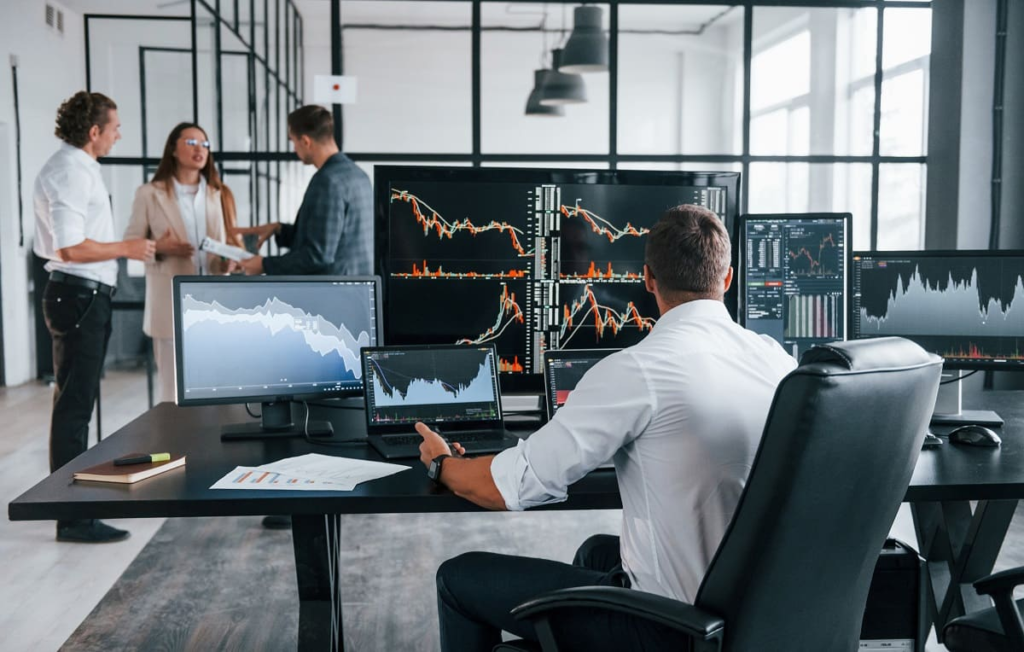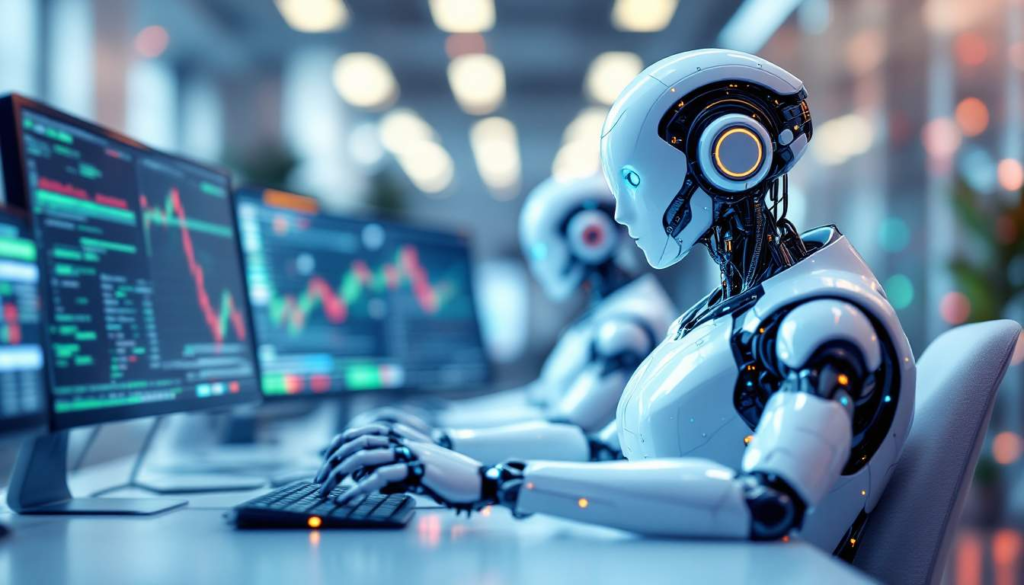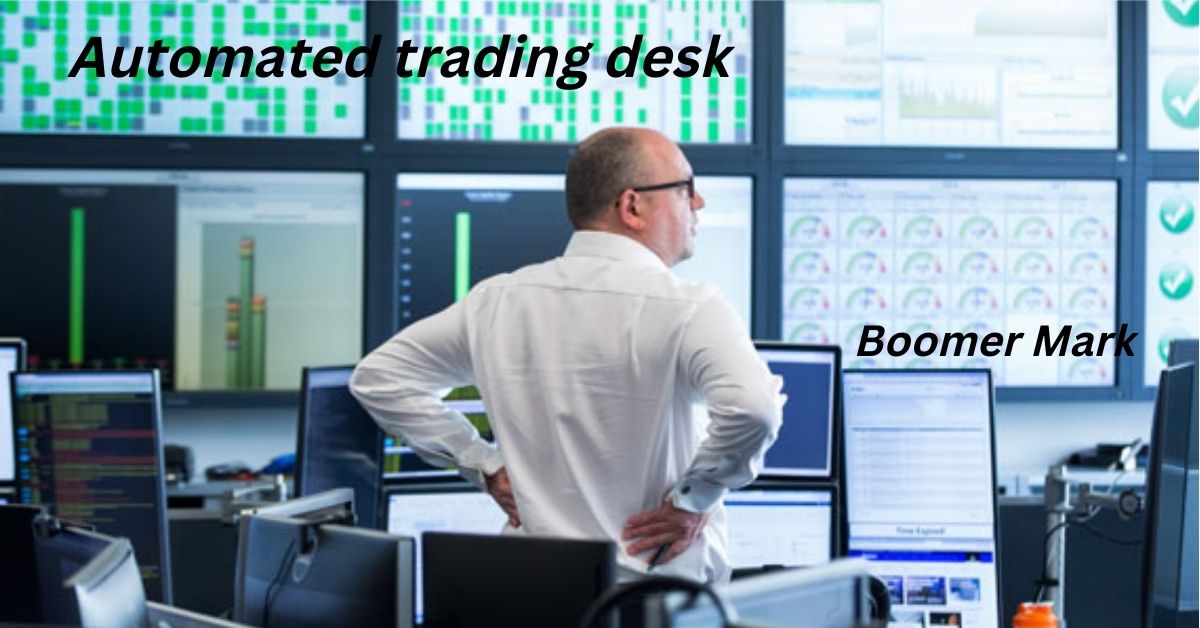In the world of financial markets, technology has played a key role in revolutionizing trading practices. One of the most prominent innovations in recent years is the rise of the automated trading desk. But what exactly is it? How does it work? And what impact has it had on the financial markets? This comprehensive guide will provide a detailed analysis of automated trading desks, exploring their technology, benefits, challenges, and future developments. Whether you’re a beginner or an experienced trader, this article will provide valuable insights into this transformative aspect of modern trading.
What is an Automated Trading Desk?
An automated trading desk is a system that uses algorithms and computer programs to execute trades without human intervention. These systems are designed to analyze market conditions, identify potential trading opportunities, and execute buy or sell orders based on pre-determined rules or strategies. Typically, they are used by trading firms, financial institutions, and institutional investors to manage large volumes of trades at high speed, thereby improving efficiency and reducing human error.
The automated trading desk is an integral part of the broader concept of algorithmic trading. In fact, algorithmic trading refers to the use of computer algorithms to trade financial products, which can include equities, commodities, derivatives, and foreign exchange. The trading desk itself is where these algorithms are deployed, monitored, and adjusted to ensure optimal performance.

How Does an Automated Trading Desk Work?
The fundamental operation of an automated trading desk involves several key components working together to execute trades in real-time. Here’s a closer look at how it functions:
1. Market Data Feeds
An automated trading desk constantly receives real-time market data. This data includes information about prices, trading volumes, and order book depth, among other metrics. The trading system must process and interpret this data quickly to make informed decisions.
Also Read:Lack Simhuloxidpov: An In-Depth Exploration into the Uncharted Concept
2. Trading Algorithms
Once the system receives the market data, it uses pre-programmed trading algorithms to analyze the information. These algorithms are designed to identify patterns, correlations, and trading opportunities based on market conditions. For example, a common strategy used by automated systems is mean reversion, where the algorithm predicts that a stock price will revert to its historical average after deviating significantly.
3. Execution Logic
Execution logic refers to the rules and conditions under which the automated trading system places orders in the market. This logic is based on predefined criteria such as price thresholds, time constraints, and risk management rules. Once the algorithm identifies a favorable opportunity, it automatically places the order with a broker or exchange.
4. Risk Management
Risk management is a critical aspect of any automated trading desk. Since trades are executed without human oversight, risk controls must be built into the system to prevent losses. These controls may include stop-loss orders, position limits, and checks for unusual market conditions or excessive risk exposure.
5. Order Routing
Order routing refers to the process of directing trades to the most suitable exchange or liquidity provider. Automated trading desks can direct orders to different exchanges based on factors like transaction cost, liquidity, or market conditions. High-frequency trading (HFT) strategies often rely on sophisticated order routing techniques to minimize execution costs and maximize profitability.
6. Execution Monitoring and Adjustment
Even though the system operates autonomously, human oversight may still be necessary for monitoring performance. Traders and financial professionals typically have the ability to monitor the execution process in real-time and adjust the algorithms or execution strategies if needed.
7. Data Storage and Analysis
An important function of automated trading desks is to collect and store vast amounts of market data. These datasets can be analyzed to identify trends, fine-tune strategies, and improve future performance. By learning from past trades and market conditions, the system can adapt and enhance its decision-making over time.
Types of Automated Trading Systems
There are several types of automated trading systems, each designed for different purposes and market environments. Some of the most common types include:
1. High-Frequency Trading (HFT) Systems
High-frequency trading involves executing a large number of trades in a very short period, often milliseconds. These trades rely on extremely fast algorithms and are executed based on small price movements. High-frequency trading desks are used primarily by institutional investors, hedge funds, and proprietary trading firms that seek to capitalize on short-term market inefficiencies.
2. Algorithmic Trading Systems
Algorithmic trading desks execute trades based on predefined algorithms designed to follow specific strategies. These strategies might include trend-following, arbitrage, or mean reversion. While HFT is a subset of algorithmic trading, the broader category can encompass various trading strategies used by both retail and institutional traders.
3. Execution Algorithms
Execution algorithms are designed to optimize the process of executing orders in large volumes. These systems minimize the market impact of large trades by splitting orders into smaller chunks and executing them over time. They are commonly used by institutional investors who need to buy or sell large amounts of assets without causing significant price fluctuations.
4. Market Making Algorithms
Market-making algorithms are used by firms to provide liquidity in the market by continuously quoting buy and sell prices. These algorithms profit by capturing the spread between the buy and sell prices. Market makers use automated systems to ensure they can respond quickly to changing market conditions and maintain tight bid-ask spreads.
5. Statistical Arbitrage Systems
Statistical arbitrage (stat arb) involves using mathematical models to exploit price discrepancies between related financial instruments. These systems often rely on machine learning and statistical analysis to identify short-term mispricings in the market and profit from the convergence of prices over time.
Also Read:PVF Qocivarvox: The Future of Secure Communication with Quantum Mechanics
Benefits of an Automated Trading Desk
The introduction of automated trading desks has brought numerous advantages to the financial markets. Here are some of the key benefits:
1. Speed and Efficiency
Automated trading desks can process and execute trades at speeds far faster than human traders. This enables them to capitalize on market opportunities in real-time, which is crucial in today’s fast-paced financial environment. Faster execution also helps minimize slippage and ensures that orders are executed at the best possible prices.
2. Reduced Human Error
Human traders are prone to mistakes caused by fatigue, stress, or emotional bias. Automated systems eliminate this risk by following predefined rules without being influenced by emotions. This leads to more consistent and reliable performance.
3. Cost Reduction
By automating the trading process, firms can reduce operational costs. There is less need for a large team of human traders, and systems can run with minimal supervision. Furthermore, automated systems often allow for better execution, reducing transaction costs, and improving the profitability of trades.
4. 24/7 Trading Capability
Automated trading desks can operate continuously without the need for breaks. This is particularly advantageous in global markets, where trading occurs across multiple time zones. Traders can take advantage of market opportunities even when they are not actively monitoring the markets.
5. Backtesting and Optimization
Automated trading systems can be backtested using historical market data to evaluate the effectiveness of trading strategies. This allows firms to refine their strategies and improve performance before executing them in live markets.
6. Diversification of Trading Strategies
Automated systems can simultaneously execute multiple strategies across different asset classes and markets. This diversification helps mitigate risk and allows firms to take advantage of a broader range of trading opportunities.
Challenges and Risks of Automated Trading Desks
While automated trading desks offer numerous benefits, they also come with their own set of challenges and risks. These include:
1. System Failures
Automated trading systems are not immune to technical issues. System failures, such as software bugs, hardware malfunctions, or connectivity issues, can lead to disastrous consequences, including large financial losses.
2. Market Volatility
Automated systems can amplify market volatility during periods of extreme market movements. If multiple trading desks execute similar strategies simultaneously, it can lead to flash crashes or excessive price swings.
3. Overfitting
In algorithmic trading, overfitting refers to the process of tailoring a trading strategy too closely to historical data, making it less effective in live markets. Systems that are overfitted may perform well in backtests but fail to deliver profits in real-time trading.
4. Regulatory Challenges
The rise of automated trading has prompted regulators to scrutinize the practice more closely. There are concerns about the impact of high-frequency trading on market stability, as well as the potential for market manipulation. As a result, regulatory bodies in various countries have introduced new rules to govern the use of automated trading systems.
5. Lack of Human Oversight
While automated systems are efficient, they lack the intuition and judgment of human traders. In complex or uncertain market conditions, algorithms may make decisions that lead to unintended consequences. This highlights the importance of having human oversight to monitor the system and intervene when necessary.
The Future of Automated Trading Desks
The future of automated trading desks looks promising, with several emerging trends that could further shape the landscape:

1. Artificial Intelligence and Machine Learning
AI and machine learning technologies are increasingly being integrated into automated trading systems. These technologies enable systems to learn from past data, adapt to changing market conditions, and improve decision-making processes over time.
2. Blockchain and Decentralized Finance
Blockchain technology and decentralized finance (DeFi) platforms are starting to influence the development of automated trading systems. These technologies could enable faster, more secure, and more transparent trading processes, as well as new opportunities for algorithmic trading in decentralized markets.
3. Increased Regulation
As automated trading becomes more widespread, regulators will likely impose stricter rules to ensure fair and transparent market practices. New regulations may focus on risk management, transparency, and the prevention of market manipulation.
4. Integration with Other Financial Technologies
Automated trading desks will increasingly be integrated with other financial technologies, such as robo-advisors, payment systems, and data analytics platforms. This integration could enhance the efficiency and versatility of automated trading systems.
Also Read:Yetalbel28.2.5w418d Code: A Complete Guide to Troubleshooting and Resolution
Conclusion
The automated trading desk has become an essential tool in the world of financial trading. It offers speed, efficiency, and precision, and it enables traders to execute complex strategies with minimal human intervention. While there are challenges and risks associated with these systems, their advantages make them indispensable for many market participants, particularly institutional investors and high-frequency traders.
As technology continues to evolve, we can expect even more advanced automated trading systems to emerge, further transforming the financial landscape. Whether you are an individual trader or part of a larger institution, understanding the workings and benefits of an automated trading desk will be crucial for navigating the future of finance.
Frequently Asked Questions (FAQs)
What is an automated trading desk? An automated trading desk is a system that uses algorithms and computer programs to execute trades without human intervention. It is used by financial institutions, trading firms, and institutional investors to manage large volumes of trades at high speed.
How does an automated trading desk work? An automated trading desk uses market data feeds, trading algorithms, execution logic, risk management techniques, and order routing to execute trades. The system works autonomously but can be monitored and adjusted by human traders.
What are the advantages of using an automated trading desk? The main advantages of an automated trading desk include speed, reduced human error, cost reduction, the ability to trade 24/7, backtesting and optimization, and diversification of trading strategies.
Are there risks involved in automated trading? Yes, there are risks, such as system failures, market volatility, overfitting, regulatory challenges, and lack of human oversight. These risks must be managed carefully to avoid significant losses.
What is the future of automated trading desks? The future of automated trading desks includes advancements in artificial intelligence and machine learning, integration with decentralized finance, increased regulation, and greater integration with other financial technologies.
